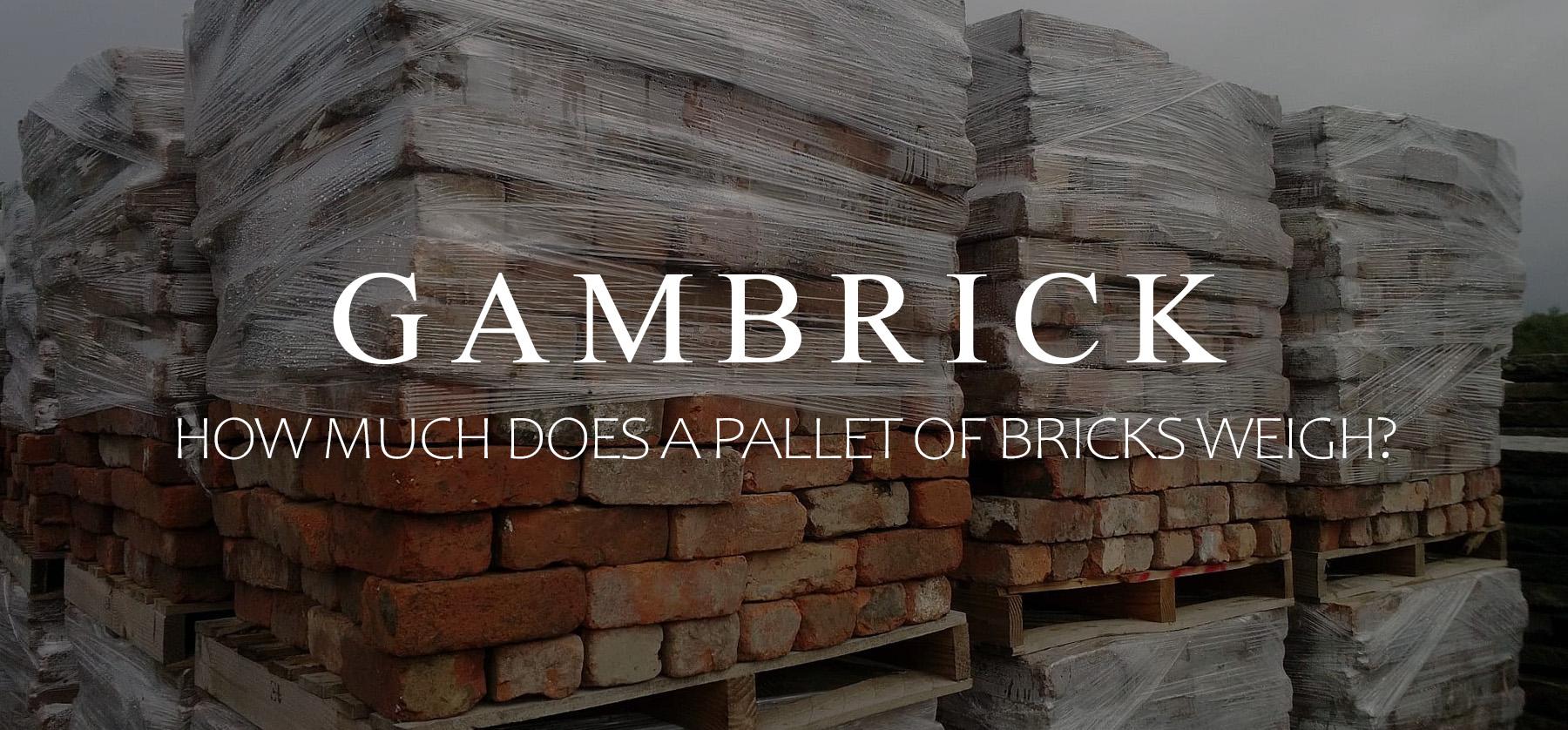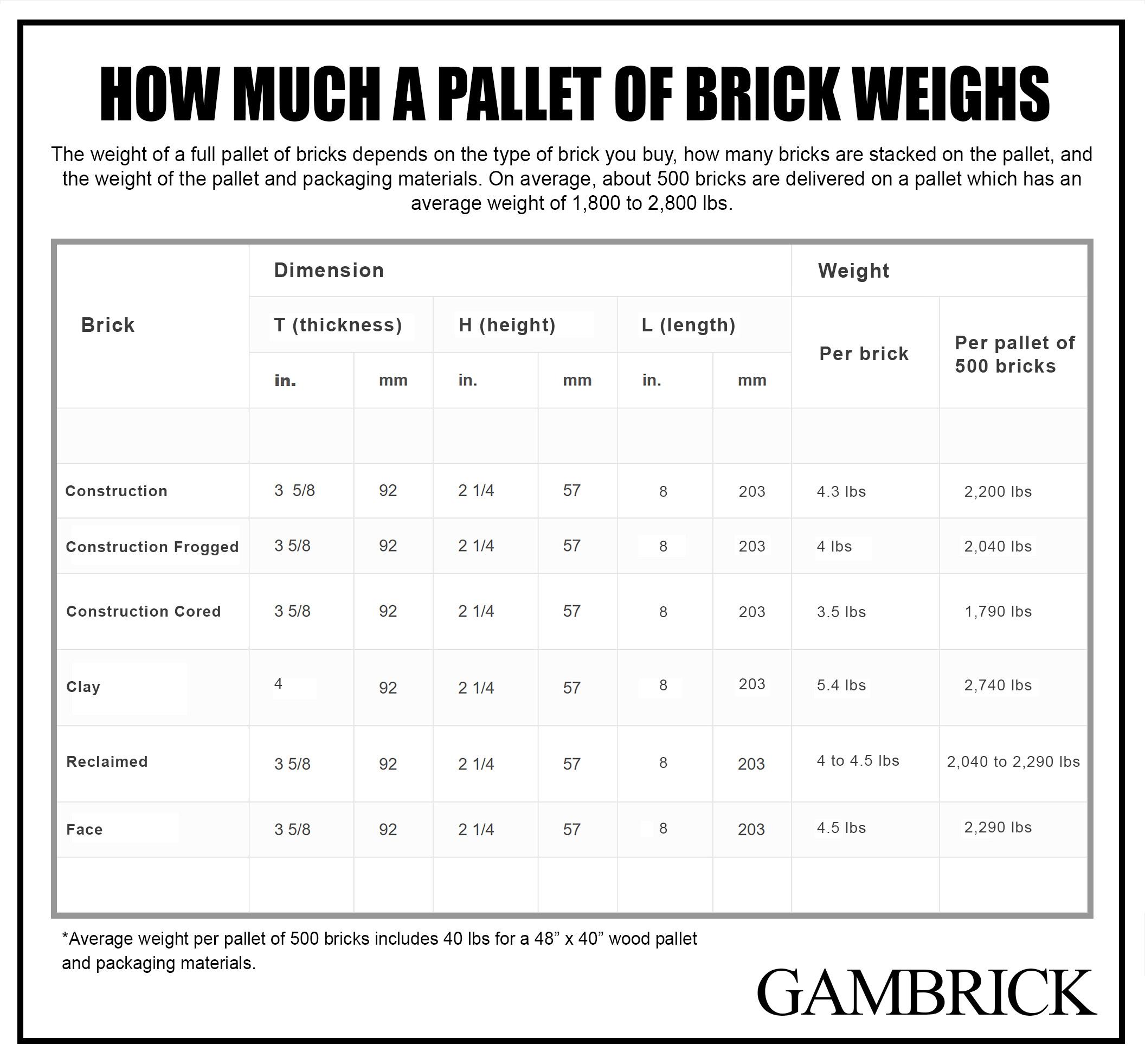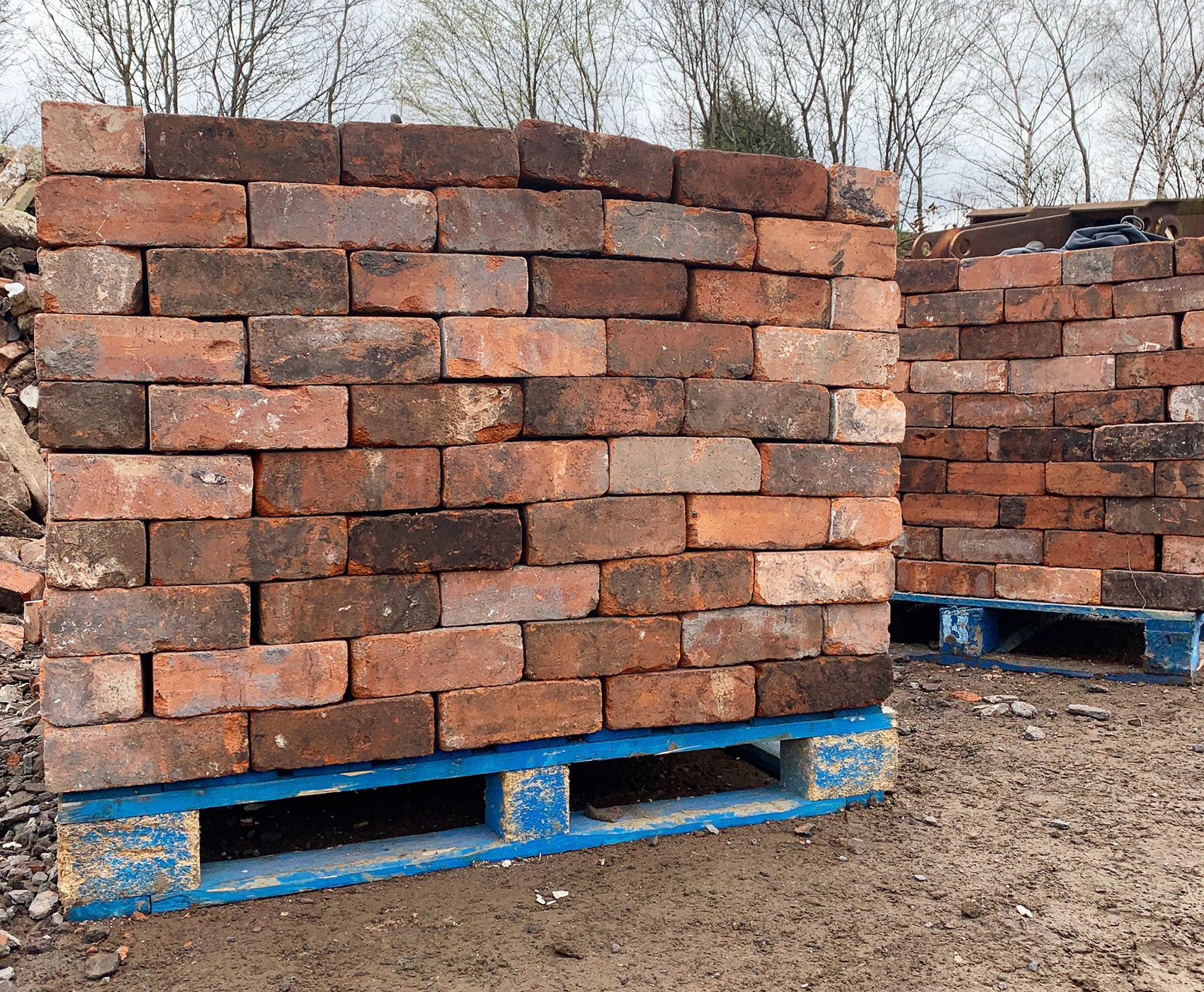
Have you ever wondered how much a pallet of bricks weighs? The weight of a pallet of bricks depends on various factors, such as the type and size of the bricks, the size of the pallet, and how high the bricks are stacked. In this article, we will explore the different types of bricks, their dimensions, weight, and how many bricks are typically found on a pallet.
Table of Contents
Factors That Affect the Weight of a Brick Pallet
There are several factors that can influence the weight of a pallet of bricks. The type of brick, its size and weight, the number of bricks on the pallet, the packaging materials used, and the weight of the pallet itself all play a role. The standard size pallet used for delivering bricks is 48 inches x 40 inches and generally weighs around 40 lbs.
A crucial consideration is the type of brick being used. Different types have varying densities and compositions, resulting in different weights. For instance, red construction bricks are generally about a pound lighter than clay bricks. There are also cored bricks, which have holes and use less material, making them lighter while still maintaining strength.
The size of the brick is another important factor. Larger bricks will naturally weigh more than smaller ones if made of the same material. However, a larger brick isn’t always heavier. For example, clay bricks are denser and heavier than construction bricks per square inch, so a smaller clay brick may actually weigh the same or even more than a larger construction brick.
The number of bricks on the pallet is a significant factor as well. Pallets with more bricks will generally weigh more, but it’s important to compare pallets carrying the same type of brick. For example, if one pallet holds more construction bricks than another pallet holding clay bricks, the former may actually be lighter, especially if the construction bricks are cored.
Weight of Different Types of Brick Pallets
The weight of a pallet of bricks can vary depending on the type of brick. Let’s explore the approximate weights of different types commonly used in construction:
Clay Bricks
Clay bricks are known for their durability and aesthetic appeal. They tend to be heavier than standard red construction bricks due to the density of clay. A pallet of red clay paver bricks from Home Depot typically contains 240 bricks, each weighing 5.4 lbs. This, along with the weight of the pallet and packaging materials, brings the total weight to about 1,340 lbs.
Red Construction Bricks
Red construction bricks are the standard bricks used in most construction projects. They measure 8 inches long x 3 5/8 inches wide x 2 1/4 inches tall and weigh 4.3 pounds. A typical pallet holds 500 construction bricks, which amounts to a weight of about 2,200 lbs, just over a ton.
Reclaimed Bricks
Reclaimed bricks have gained popularity due to their unique character and history. Their weight can vary depending on factors such as size, thickness, and age. A typical pallet of solid reclaimed red bricks holds 500 bricks, weighing approximately 2,040 to 2,290 lbs, including packaging materials and the pallet.
Frogged Bricks
Bricks with indentations on both faces, known as frogged bricks, are preferred by many builders for their ability to hold more mortar. They have a weight reduction of about 1/4 to 1/2 lb due to the frog. A pallet of frogged red construction bricks, holding 500 bricks, weighs around 2,040 lbs, about a ton.
Cored Bricks
Cored bricks have holes running through them, reducing their weight while still maintaining strength. They are commonly used for brick walls due to the mortar running through their centers. On average, a cored red brick weighs about 3 1/2 lbs. A pallet of cored red bricks, holding 500 bricks, weighs approximately 1,790 lbs, about 1 3/4 ton.
Face Bricks
Face bricks are high-quality bricks used for building exteriors and edges. They provide durability, aesthetic appeal, and excellent insulation properties. Face bricks typically weigh about 4.5 pounds and are heavier than other construction bricks due to their solid and dense composition. A pallet of face bricks, holding 500 bricks, weighs around 2,290 lbs.

How to Determine the Weight of a Pallet of Bricks
Determining the weight of a pallet of bricks is simple yet important if you plan to handle or transport the bricks yourself. Here’s a step-by-step guide:
- Know the type of brick you’re ordering and its individual weight.
- Multiply the weight per brick by the number of bricks you want on the pallet. Standard pallets have a weight limit of 4,600 lbs and are usually stacked less than 4 feet high. Keep in mind that about 50 bricks fit on a standard face-down pallet, and 500 bricks are typically stacked 2 feet high.
- Add approximately 40 lbs for the weight of the pallet and packaging materials.
For example, if you have a 1/2 ton pickup truck and want to know how many bricks you can safely carry on the pallet:
- Subtract 40 lbs (the weight of the pallet and packaging materials) from 1,000 lbs (1/2 ton).
- Divide the remaining weight (960 lbs) by the weight of the brick you’re buying. If the brick weighs 4.3 lbs, the calculation would be 960 / 4.3 = 223 bricks.
- Divide 223 by 50 (the number of bricks in a row) to determine how many rows high you can stack the bricks. In this case, it would be approximately 4.46 rows.
- Your 1/2 ton pickup bed can transport a pallet carrying 223 red construction bricks, stacked 5 rows high.
Typical Weight of a Pallet of Bricks
On average, a standard 48″ x 40″ pallet holding 500 bricks weighs around 1,800 to 2,800 pounds. This weight includes the bricks, pallet, and any packaging materials used to secure the bricks.
When handling and transporting brick pallets, it’s crucial to take proper precautions. Use specialized equipment like forklifts or bobcats to move the pallets safely, and secure the load with straps, ropes, or chains. Wearing safety gear, such as gloves and work boots, is also essential.

Standardization of Pallet Sizes
Pallet sizes have been standardized over time to ensure compatibility with equipment such as forklifts. The most common pallet size is 48 inches x 40 inches, as advocated by the Grocery Manufacturers’ Association (GMA) in the United States. This standardization allows for easier handling and transportation.
Bricks are generally delivered on pallets of 40 by 48 inches, which provide a surface area of 1,920 square inches. When stacked face-down, such pallets can accommodate approximately 50 bricks per row. Depending on the type of brick and weight capacity, it may be possible to stack up to 20 rows, which would amount to 1,000 bricks.
Safety is a priority, so it’s advisable to keep the weight of the pallet under the 4,600 lbs limit and the height under 4 feet. If necessary, it’s better to use multiple pallets rather than overloading a single one.
Summary: How Much Does a Pallet of Bricks Weigh?
To sum it up, the weight of a pallet of bricks depends on various factors, including the type and size of the bricks, the size of the pallet, and how high the bricks are stacked. On average, a standard pallet holding 500 bricks weighs about 2,200 lbs, just over a ton. However, weights can range from 1,340 lbs for red clay paver bricks to approximately 2,290 lbs for face bricks.
It’s important to consider the weight of a pallet of bricks for handling and transportation purposes. Pallets weighing over 1,000 pounds may exceed the capacity of standard truck beds. Once on site, special handling equipment such as forklifts or bobcats is necessary for safe movement.
If you have any further questions or need assistance regarding the weight of a pallet of bricks, feel free to reach out to us via email.
This article has been written with the 5 Ws in mind. For more information, visit 5ws.wiki.


